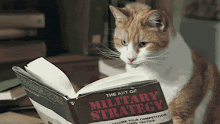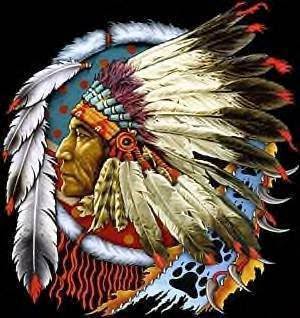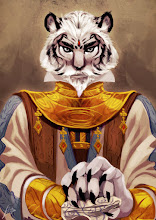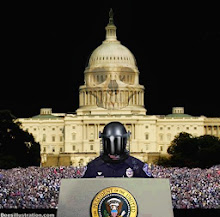Sharon Leslie Morgan and Thomas Norman DeWolf
May 20, 2015
Sharon’s Story
I burst into tears in the parking lot of the Lowndes County Interpretive Center in rural Alabama. Tom and I were five days into the 6,000-plus mile “healing journey” that informed "Gather at the Table", the book we wrote about healing the many wounds Americans inherited from the legacy of slavery. We had just crossed the Edmund Pettus Bridge in Selma where, in March 1965, John Lewis (now a 15-term U.S. congressman) and more than 600 protesters tried to begin a 54-mile march to Montgomery. On a day that came to be known as “Bloody Sunday,” Alabama state troopers confronted the peaceful marchers and viciously attacked them with billy clubs. I watched these events unfold on television as a 14-year-old child embraced in the warm comfort of my family home in Chicago.
My great-grandparents were enslaved in Lowndes County, Alabama, which is at the heart of the historic march route. They lived a lifetime of Bloody Sundays. My great-grandmother Rhoda Reeves Leslie was alive when I was a child. I knew her. I loved her. I had no concrete idea, until that very moment in the parking lot, what anguish she and other members of my family had suffered as slaves, and then as people who were terrorized by Jim Crow laws, disenfranchised from voting, and kept from becoming full citizens in “the land of the free and the home of the brave.” In 1965, there were zero black voters in Lowndes County because of voter suppression through poll taxes and intimidation. Even today, it is deeply impoverished. Tom’s face morphed into a representation of all white people and everything they had done to people like me.
Photo by Kristin Little.
I didn’'t know what to say. So I said nothing. I sat in the passenger seat next to Sharon while she sobbed. Twenty minutes earlier, on the drive from the Voting Rights Museum, I had asked her, “What would you do if you had lived here then?”
“I would kill them,” she said, staring straight ahead as she drove, clutching the steering wheel in a death grip. I watched the first tear roll down her cheek.
I am often accused of being a Kumbaya kind of guy. I believe seriously in love and peace and want everybody to get along. I also believe that people are born with a basic sense of humanity that can enable them to change—not just themselves but the communities in which they live. I know Sharon shares that belief, but it is sometimes hard to keep the faith.
We first met in 2008, through Coming to the Table, a nonprofit organization founded by the descendants of both slaveholders and enslaved people in partnership with the Center for Justice and Peacebuilding (CJP) at Eastern Mennonite University in Harrisonburg, Virginia. [Tom is currently executive director of Coming to the Table.] The founders were inspired by the vision of the Rev. Dr. Martin Luther King Jr. in his historic March on Washington speech that one day “the sons of former slaves and the sons of former slaveholders will be able to sit down together at the table of brotherhood.” The work of Coming to the Table is to acknowledge and heal wounds from racism that are rooted in the United States’ history of slavery.
We were just lost souls looking for direction and relief.
In 2009, Sharon and I embarked upon a journey to test whether two people- —an African American woman from South Side Chicago who is descended from enslaved people, and a white man from central Oregon who is descended from the largest slave-trading dynasty in U.S. history —could come to grips with deep, traumatic, historic wounds and find healing. We had no idea where we would end up. We were just lost souls looking for direction and relief.
So there we were, sitting in a car in Alabama, bearing witness to yet another example of the great American trauma that keeps all of us mired in the misery of racism. Grappling with that awareness isn'’t easy, especially when sitting next to a woman crying her heart out over something I couldn'’t totally comprehend.
The hard truth is that my face does represent the face of oppression. I’'m white. I’'m male. I’'m heterosexual. I'’m able-bodied. I was raised Christian in a middle-class home and community. Until the summer of 2001, when I joined members of the DeWolf family on a mission to retrace the triangle slave-trade route of our ancestors, I was blissfully unaware of my unearned privilege. On that journey I was exposed to horrific truths about the foundations upon which America is built and the systems that continue to benefit people who look like me and discriminate against people who look like Sharon.
In spite of that understanding, what Sharon said did not seem fair. I am not my slave-trading ancestors. I helped expose their sins when we made the PBS/POV documentary "Traces of the Trade" and when I wrote my first book, "Inheriting the Trade".
One great revelation along the way came from Coming to the Table co-founder Will Hairston, who said to me, “Guilt is the glue that holds racism together.” We build walls with bricks of denial to protect ourselves from feeling it. In the end, guilt is divisive and counterproductive. Instead of the destructive feeling of guilt, what I do feel is profound grief over the enormous damage done. I feel a responsibility to acknowledge and address the consequences of our historical inheritance. That is why I dedicate myself (and encourage other white people to do the same) to using my privilege to expose the truth and make a positive difference.
During the three years after that day in the parking lot, Sharon and I drove thousands more miles and waded ever deeper into the morass of history. Along the way, we laughed, cried, argued, and shared transformative experiences that changed the way we both look at the world. We subsequently participated in STAR trainings (Strategies for Trauma Awareness & Resilience) through CJP to seek ways to make sense of it all. Through STAR, we learned about terrifying social patterns exhibited by deeply traumatized societies and what we can do to heal their effects.
Photo by Kristin Little.
In 1970, poet, essayist, and environmentalist Wendell Berry published “The Hidden Wound,” a 137-page essay on race and racism. He wrote: "“[Racism] involves an emotional dynamic that has disordered the heart both of the society as a whole and of every person in the society."” He said, “"I want to know, as fully and exactly as I can, what the wound is and how much I am suffering from it. And I want to be cured; I want to be free of the wound myself, and I do not want to pass it on to my children. … I know if I fail to make at least the attempt, I forfeit any right to hope that the world will become better than it is now.”"
A foundational American belief is that certain people are less than human, singled out for disdain, undeserving of respect, and certainly not entitled to equal representation in the “American Dream.” The short list of atrocities that define the African American experience shows those beliefs in action: African people were enslaved in all 13 original colonies. Ninety-five percent of all American trans-Atlantic slave-trading originated from northern ports. Rhode Island, home to the DeWolf slave traders, was responsible for 50 percent of it. More than two centuries of brutalization during slavery were followed by 100 years of Jim Crow. Slaves were formally liberated, but African Americans were subjected to the terrorism of the Ku Klux Klan, lynching, and other atrocities. Beginning in 1910, in two waves over 60 years, more than 5 million people joined the Great Migration from the South. They sought opportunity in the “promised land” of the North, but found only a veneer of equality. The Red Summer of 1919, a wave of riots initiated by whites against blacks in both Northern and Southern cities, proved the point.
Today, relative to white people, people of color fall on the negative side of virtually all measurable social indicators. In 2014, the Pew Research Center reported that “the median white household was worth $141,900, 12.9 times more than the typical black household, which was worth just $11,000.” Poverty rates for African Americans are more than 160 percent higher; unemployment is double. White and black Americans use and sell illegal drugs at remarkably similar rates, but African Americans are incarcerated at 10 times the rate of whites for drug offenses. Seventy-six unarmed black people were killed by police from 1999–2014, including—just in the last year— Michael Brown (Missouri), Eric Garner (New York), and John Crawford (Ohio). According to ProPublica’s analysis of federally collected data on fatal police shootings, “young black males in recent years were at a far greater risk of being shot dead by police than their white counterparts —21 times greater.”
The STAR program emerged in the aftermath of the World Trade Center and Pentagon attacks of September 11, 2001. As described in "STAR: The Unfolding Story 2001-–2011", the Center for Justice and Peace building at Eastern Mennonite University and Church World Service partnered to create a training program for religious leaders and caregivers working to support traumatized communities. The program evolved into trainings that were useful to anyone working with traumatized individuals and communities. It is grounded in a multidisciplinary framework that integrates neurobiology, psychology, restorative justice, conflict transformation, human security, and spirituality. More than 7,000 people working in more than 60 locations around the world have received STAR training.
No one can “just get over” traumatic wounds. That’s not how our bodies and brains work.
The illustration below of the “Cycles of Violence” shows how people typically respond to traumatic wounds. We become caught up in a seemingly infinite loop of victimhood and aggression that is fueled by reenactment. Our conscious and unconscious beliefs about how and why we'’ve been harmed and who caused the harm often result in a desire for retribution. As STAR trainers say, “hurt people hurt people.” Traumatic wounds result from a variety of sources and impact individuals, families, communities, and societies. These impacts fester in wounds that have never healed—like the legacies of slavery, racism, sexism, and religious intolerance. Trauma affects the well-being of the whole person: body, mind, and spirit.
No one can “just get over” traumatic wounds. That’s not how our bodies and brains work. If we don’t do the work we need to heal, we end up trapped in cycles of violence. But that’s not inevitable. The STAR approach offers ways to break the cycles.
Without intervention, our thoughts and feelings become beliefs. Our beliefs direct our actions and inform the reality of our everyday lives. If we are stuck in cycles of violence, our thoughts, beliefs, and actions become mired in fear. Breaking cycles of violence and building resilience requires fully engaging our brains with the conscious intention of healing.
The actions that lead toward healing and reconciliation center on acknowledging the harm through mourning, confronting our fears, hearing the story of the “Other,” choosing to forgive, and incorporating principles of restorative justice in ways that proffer dignity for all who have been harmed by stressing responsibility and restitution.
The STAR approach connects personal and community healing with organizational and societal well-being. It rests at the foundation of the Coming to the Table approach to healing the lingering wounds that emanate from the American institution of slavery. The four interrelated activities involved in the Coming to the Table method are:
First: Researching, acknowledging, and sharing personal, family, and societal histories of race with openness and honesty. Truth and reconciliation commissions in countries like South Africa, Brazil, Colombia, and Canada are model attempts to reveal the whole truth of egregious wounds that afflict modern societies. They are typically combined with attempts to implement restorative justice to correct the wrongs.
Breaking cycles of violence and building resilience requires fully engaging our brains with the conscious intention of healing.
Second: Connecting with others within and across racial lines in order to develop deep and accountable relationships. As an example, the original intent of the founders of Coming to the Table was to connect “linked descendants”—people who have a joint history in slavery (i.e., descendants of slaves and their slaveholders)—with a goal of engaging them in communication with one another and coming to terms with their shared history. In our own case, we are not as directly connected as that, but were able to find a way by “making friends on purpose” to cross the breach.
Third: Exploring ways to heal together. Support groups help people build meaningful relationships by sharing stories about traumatic experiences and responses. Rituals related to acknowledgement of the past help create connections between past and present in order to understand where harms originated, how they affect us in contemporary times, and how we can move forward to healing.
Fourth: The model challenges us to actively champion systemic change that supports repair and reconciliation between individuals, within families, and throughout society. The persistent inequality between races results from structural systems in which people are treated differently based on difference (race, power, privilege, etc.). From the recent Department of Justice report damning the pervasive, discriminatory policing practices in Ferguson, Missouri, to the persistent disparities between black and white people in wealth, education, health, employment, and housing, the effects are before our eyes if we are willing to see. The greatest challenge is eliminating disparities so that all people are treated equally and without prejudice based on their race, religion, gender, or sexual orientation.
There is no particular sequence to these four activities. In the final analysis, all are essential to move forward from trauma to healing. With regard to racism, white people often want to rush toward reconciliation without doing the necessary hard work that is required along the way. We are here to tell you: The road is not easy, but the benefits are enormous.
Racism. Sexism. Religious intolerance. Inequality. Violence.
Engage your rational brain. Think about things in different ways. Examine your subconscious beliefs. Act in ways that lead toward positive change. Open your eyes to the injustices around you. Open your heart to see others, not as the “Other” but as brothers and sisters in the human family. You will find that others who believe as you do will congregate together and build social and political power to change the institutions that presently seem to control our fate. When people’s hearts and minds change, collectives like Coming to the Table can be empowered to bring change to society at large.
In 49 B.C., Julius Caesar stood on the northern bank of the Rubicon River in Italy, leading an army in defiance of the Roman Republic. It was an act of treason. The phrase “crossing the Rubicon” has survived to refer to any individual or group committing itself irrevocably to a risky or revolutionary course of action. It has come to mean “passing the point of no return.”
In 1965, John Lewis and more than 600 others crossed the Edmund Pettus Bridge, the Rubicon of their day. We stand on the shore of today’s Rubicon—the Rubicon of racism. We have a choice to make. We can choose the difficult task to acknowledge and heal our nation’s historic, inherited wounds and break free from the Cycles of Violence. Or we can do as our ancestors have done to us: pass the wounds on to our children.









































No comments:
Post a Comment